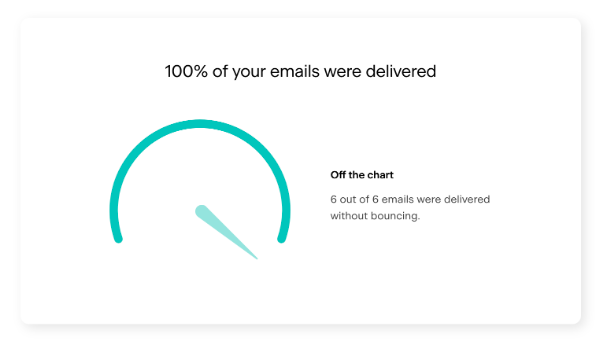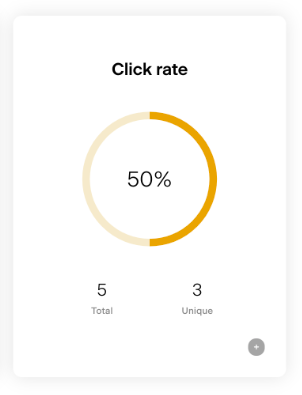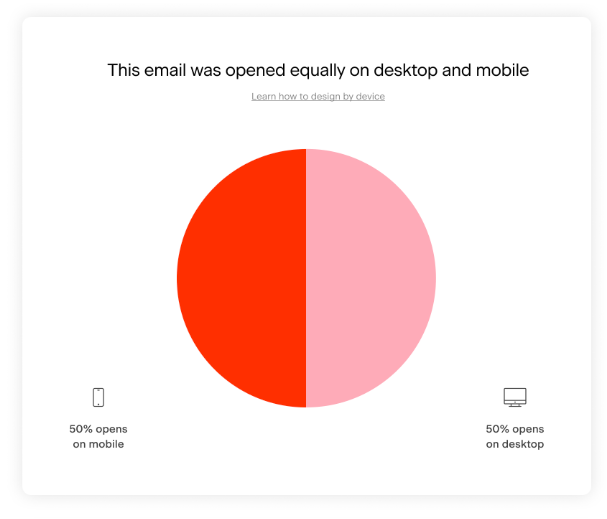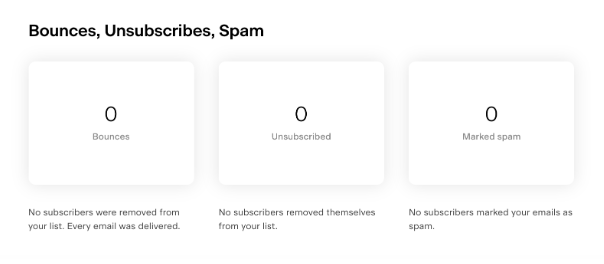8 Email Marketing Metrics for Ecommerce (& How To Improve Yours)
Table of Contents Jump to:
Jump to:
Table of contents
Imagine for a minute that 1,000 people sign up for your newsletter. You send them a series of automated emails to bring them on board, and over time they become loyal, engaged subscribers and customers.
But after a while, 300 of those subscribers stop clicking through your emails to make purchases. Then they stop opening them at all. Pretty soon, they’ve unsubscribed and you’re not hitting your sales numbers.
This is why monitoring your email marketing metrics is so important. It helps you build and maintain revenue from the email channel.
It also helps you hit ecommerce KPIs like net profits, customer retention rate, and more. It’s like a preview of the end results, giving you time to make adjustments before it’s too late.
With this in mind, we’ve compiled this guide to walk you through key email marketing metrics when it comes to e-commerce. We’ll also cover best practices you can follow to improve your metrics.
Get unlimited email sends & subscribers with Flodesk
We’ll never increase pricing because your email list is growing
8 email marketing metrics for ecommerce
In this section, we’ve handpicked eight key metrics for you to keep an eye on—not so much that you end up drowning in information overload, but enough that you don’t miss important indicators.
1. Deliverability
Your deliverability rate is arguably the most important metric when it comes to ecommerce email marketing. After all, if your emails aren’t getting to your customer’s inbox, nothing else matters.
As an ecommerce business, having a high deliverability rate is especially important because you’re probably sending a good amount of transactional emails (order confirmations, shipping notifications, cart abandonment messages, etc).
Since these emails are sent automatically in response to a customer action (like placing an order), the customer is often waiting to receive them. If your transactional email doesn’t go through, it can lead to confusion and a poor customer experience.
At Flodesk, we calculate deliverability rates by taking the total number of emails delivered and dividing it by the total number of emails sent. If you send 1,000 welcome emails, for example, and 980 are delivered, your deliverability rate would be 980/1,000 = 98%. (This would be really good, considering the average deliverability rate of marketing emails is 80%).
Wondering why an email wouldn’t be delivered? Good question. Sometimes it has to do with behind-the-scenes techy stuff like email servers and IP addresses. Other times it’s because you’re sending to incorrect or outdated email addresses.
Both scenarios affect what’s known as your sender reputation. This is basically a reputation your sending email address earns over time by showing “good behavior” when it comes to email marketing. The better your sender reputation becomes, the better your chances of reaching people’s inboxes.
If your deliverability rate starts falling or seems too low to begin with, here are a few tips to bring it back up:
- Authenticate your domain
- Only migrate active subscribers if you change email service providers
- Never buy an email list
- Warm up your sending email address
- Segment your audience and only send relevant emails
- Periodically remove unengaged subscribers
- Avoid spam filters at all costs
(Want more details? Read our guide on improving email deliverability).
2. Conversion rate
After deliverability, the next most important metric to watch is your conversion rate. This is a measure of how many people are “converting” into customers by taking the desired action, which typically means making a purchase in the ecommerce world.
Jaykishan Panchal of E2M Solutions puts it this way: “In a nutshell, your conversion rate is indicative of how successful all of your business strategies are in getting people to engage with your ecommerce website. Ultimately, it impacts just about every other KPI involved in ecommerce.”
For example, let’s say you send out an email to 1,000 people with a 20% off coupon. 200 people click through your email and shop around on your website. Out of those 200 people, 50 end up making a purchase.
This means that out of 1,000 emails, you converted 50 people into paying customers, giving you a conversion rate of 5% for that particular email—and for the record, a 5% conversion rate would actually be really impressive. As you can see in the chart above, global ecommerce conversion rates were hovering just below 2% in early 2021 before falling to a low of 1.5% in February 2022.
However, conversion rates vary a lot by product category. Currently, arts and crafts have the highest ecommerce conversion rate at 4.17%. After that you have:
- Kitchen and home appliances at 2.64%
- Health and wellbeing at 2.11%
- Toys, games, and collectibles at 1.98%
- Food and drink at 1.51%
- Electrical and commercial equipment at 1.47%
- Fashion clothing, and accessories at 1.37%
- Sports and recreation at 1.36%
There are a number of things you can do to improve your conversion rate, both within your email marketing campaign and outside of it. For example, personalizing your email messages can boost conversion rates up to 6 times. Learn more by reading How to Use Targeted Email Marketing to Boost Conversion Rates.
You’ll also want to optimize your checkout process and remove as much friction as possible. Tips include:
- Increasing your site speed
- Offering several different payment methods
- Improving your overall website design
- Simplifying the checkout process
- Offering free shipping or being upfront about your shipping prices
- Optimizing checkout for mobile devices
Get unlimited email sends & subscribers with Flodesk
We’ll never increase pricing because your email list is growing
3. Open rate
Another important metric to watch is your open rate. As you might guess, the open rate tells you how often recipients are opening your emails, which is the first hurdle you need to cross once you make it to the inbox.
Flodesk calculates your open rate by taking the unique number of people who opened your email and dividing it by the total number of emails delivered. So if you send 10,000 emails and 2,000 different people open them, your open rate would be 20%—putting you just above the average open rate of 18% across all industries.
When analyzing your open rate, it’s important to look at numbers not only for individual campaigns but also as a trend over time—open rate trends are a good indicator of the overall engagement. So if your open rate starts to fall, make sure you’re:
- Sending emails regularly but not too often
- Optimizing your subject lines
- Targeting different subscriber segments with relevant messages
4. Click-through rate
Next up is your click-through rate, which tells you how many recipients click on the links inside your email to visit your ecommerce website. This metric is an important measure of engagement since it shows the percentage of subscribers who go beyond just opening your email to actively engage with your content.
At Flodesk, we calculate the click-through rate by taking the number of people who click on a link and dividing that by the total number of emails delivered. For example, let’s say you deliver 5,000 emails and 500 people click on your link. Your click-through rate is then 10% (500/5,000).
The average click-through rate for email ranges from 6% to 9%, depending on the industry. If your click rate could use a boost, try some of the following tips:
- Inspire readers to take action by providing something of value. This can be a discount code, a limited-time offer, a sneak peek, exclusive access, etc.
- Test the links in your email on multiple devices to make sure customers can easily take action.
- Run A/B testing to determine the best anchor text, location of the link in the body of the email, number of times you include the link and copy leading up to the link.
5. Opens and clicks by device
Knowing whether your subscribers are opening your emails on their desktop or mobile devices can help you optimize your email design for even greater engagement.
If you find that your audience prefers opening emails on mobile (which is increasingly common), keep these mobile-first design best practices in mind to give them the best experience:
- Always preview your email on your own phone before sending: If anything looks odd or doesn’t load properly, be sure to adjust it so everything looks as great on a mobile screen as it does on a desktop.
- Get to the point with your subject line and preview text: There’s less room on a mobile screen, so make sure to keep these concise. You can double-check that they aren’t getting cut off when you check your test email on your phone.
- Bump up the font: Smaller screens mean smaller everything. You might consider bumping up the font size a bit so your email’s easier to read on a phone.
Prioritize what’s above the fold: Keep your most important content and CTAs above the fold—that means anything that’s on the screen without having to scroll down—so you can grab your subscriber’s attention immediately. You might consider using smaller images or moving images further down in your email.
6. Bounces, unsubscribes & spam
Okay, now it’s time for some of the downers in the metrics world: bounce rate, unsubscribes and spam. For all these metrics, you want the numbers to be as close to zero as possible.
Let’s take a look at each one, starting with bounces.
Bounces refer to emails that aren’t successfully delivered, usually because they’ve been blocked or flagged as spam. This means your bounce rate is essentially the inverse of your deliverability rate. You can keep your bounce rate low by:
- Cleaning your email lists regularly.
- Not sending anything that looks (or acts) like spam.
- Not using a free email service like Gmail or Hotmail.
- Personalizing your emails as much as possible.
- Getting permission from your subscribers (preferably with a double opt-in process)
- Giving subscribers control over what types of emails they receive.
- Sending emails regularly but not too frequently.
As for unsubscribes, this is the percentage of recipients who click on the unsubscribe link in your emails. And while you generally want to keep your unsubscribe rate low (0.5% is average for an email campaign), it’s important to remember that not all unsubscribes are bad.
It’s much better for a recipient to unsubscribe than flag you as spam, for example. Plus, unsubscribes actually do a bit of housecleaning for you through people removing themselves before they start dragging down your other metrics, like click rate and conversion rate.
Then you have the spam rate—a measure of how many email recipients mark your email as spam. An acceptable spam rate (set by major inbox providers like Gmail) is considered to be anything less than 0.1%, or 1 complaint for every 1,000 messages.
There are many things you can do to keep your spam rate low, like regularly cleaning your email list, including easy-to-find unsubscribe links and only sending relevant content.
It’s also super important to use a recognizable sending email address. When people sign up to receive emails from your website, they expect to get emails coming from you or your business. If they get an email that seems like it’s from some random person or company, they’re probably going to mark it as spam.
So be sure to set your sending email address and From Name for your emails to something your subscribers will easily recognize as being you. We love From Names that include both your name and your brand’s, like “Petra from Flodesk.”
Same with your sending address. Using your name and your brand is always great (petra@flodesk.com), or you can use something a bit more general but still friendly, like hello@flodesk.com.
7. ROI
Another important number in ecommerce is your ROI or return on investment. This answers the basic question: did you make more money than you put in?
In general, email marketing does pretty well in terms of ROI because it’s relatively inexpensive, driving an average ROI of $40 for every dollar spent—higher than any other channel.
When calculating ROI, the first step is to figure out how much you spent on your campaign. Then you need to figure out your “gain,” or how much your campaign brought in. Fortunately, most analytics platforms will trace every sale that comes from an email, making this part fairly easy.
Once you have these numbers, plug them into the following formula: (gained – spent)/spent = ROI. As with your other metrics, you should check this metric for each campaign and keep an eye on general trends.
8. List growth
Unfortunately, email lists tend to “go bad” over time. Some people lose interest and stop engaging with your emails while others switch email accounts, leaving you with an old, abandoned one that drags down your numbers.
As we mentioned in the section about bounces, unsubscribes and spam, this is why it’s important to regularly clean your email list. But it’s also important to regularly grow your email list by adding new subscribers. Otherwise, you’d just be slowly depleting your list every time you remove inactive or incorrect addresses.
To make sure your email list is moving in the right direction, you can monitor your list growth rate, which shows the rate at which your email list has grown over a certain period of time.
Here’s how to calculate it: New subscribers – (unsubscribes + complaints) / Total subscribers over a specific period of time.
One of the best ways to grow your email list is with a newsletter. Need some ideas? Check out our article 10 Ecommerce Newsletter Examples Packed With Inspo & Ideas.
Get unlimited email sends & subscribers with Flodesk
We’ll never increase pricing because your email list is growing
Best practices for improving ecommerce email marketing metrics
Now that you know which metrics are most important to watch, here are a few best practices for hitting your numbers.
Grow your list organically (don’t buy it)
The best subscribers are the ones who are interested in your product and signed up to receive your emails. If you buy email lists, on the other hand, your recipients probably have no idea who you are. This usually translates into a high bounce rate, lots of spam flags and frequent unsubscribes—all of which drag down your sender reputation. Wondering how to get more subscribers? Check out how to build an email list in 11 steps.
Take the time to optimize your emails
There are a lot of little things you can do to improve the performance of your emails, from front-loading your subject lines to using a single, clear CTA that lets readers know exactly what to do. For more ideas, check out 10 Email Optimization Strategies for Big Wins in Your Next Campaign.
Conduct frequent A/B testing
What works for one audience or campaign doesn’t necessarily work for another. For this reason, it’s critical to run frequent A/B testing on your subject lines, CTAs, images, body copy and more. With subject lines, for example, you can test for things like length, tone and word choice. Then take a look at your open and click-through rates to see what works best with your readers.
Focus on quality over quantity
Inboxes are crowded. Respect your subscribers’ time by only sending high-quality, relevant emails on a regular (but not too frequent) basis. The best way to do this? Segment your subscribers and personalize emails for each group.
Design emails with the user experience in mind
Email design directly affects whether subscribers have a good or bad experience with your email. Here are our favorite design principles for both mobile and desktop devices:
- Keep it short and sweet. Give them concise, relevant content so they’re excited to click open when they see your email come through—and trust that you’ll provide value.
- Mind the spacing. To design emails that look professional and beautiful, put a 20 to 40-pixel spacer between each block in your email. This adds a light and airy feel to your design. Then make sure to check that your spacers are consistently placed between all blocks to avoid that icky “broken HTML” look.
- Have clear, short CTAs (calls to action). This is widely studied and proven to significantly impact your click rate. A button that says “Buy now” or “Click here” is going to convert much better in your email than “Click here to buy it now.” Long button CTAs also tend to wrap on mobile devices, making your button look broken. Truly—the shorter, the better!
Avoid looking like spam
69% of email recipients report email as spam based on the subject line alone. To make sure this doesn’t happen to you, avoid ALL CAPS as well as the use of lots of special characters (#%*@). Also, avoid words or phrases that are considered spammy like “apply now” or “cash bonus.”
Create a winning ecommerce email marketing strategy
Email marketing is a powerful tool for ecommerce brands, helping you boost metrics and meet key KPIs—all with minimal investment.
As the fastest-growing email marketing company, Flodesk makes email marketing beautiful—and truly easy. Combining design with simplicity, Flodesk helps small business owners grow their email lists and create emails people love to get.
Flodesk’s curated e-commerce email template gallery and stunning form templates make it easy for members to quickly customize their emails and forms, elevating their brand for maximum engagement and conversion.
The intuitive email builder includes drag-and-drop functionality as well as Flodesk’s innovative and proprietary Layout blocks. With Layouts, members no longer need to use a third-party software, like Canva or Illustrator, to create custom graphics; they simply add a new Layout to create incredible designs with specialty fonts right within the email builder.
Flodesk stands out from the crowd by encouraging its members’ success and list growth, offering unlimited email sends, unlimited subscribers and unlimited access to all features for a flat fee of $38/month. Try Flodesk for free today!
Ecommerce email marketing metrics FAQs
1. What is the most important metric in email marketing?
Deliverability is arguably the most important metric in email marketing, followed closely by conversion.
2. What are KPIs in email marketing?
KPIs, or key performance indicators, are metrics that are tied closely to your company’s goals and objectives. Common examples include conversion rate and ROI.
3. Is email marketing effective for ecommerce?
With the highest ROI of any channel, email marketing is a very effective strategy for ecommerce brands to increase sales and engage customers.






